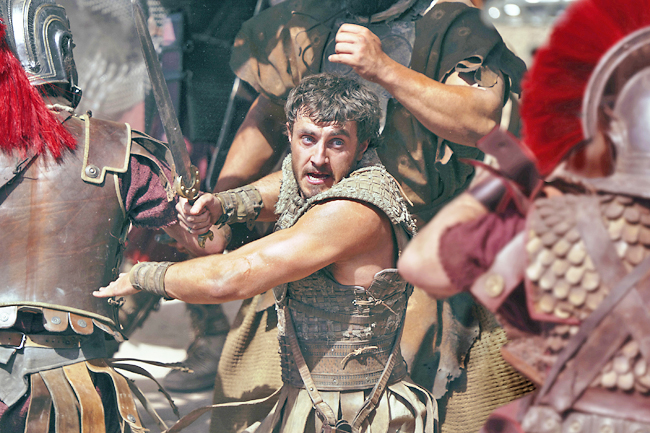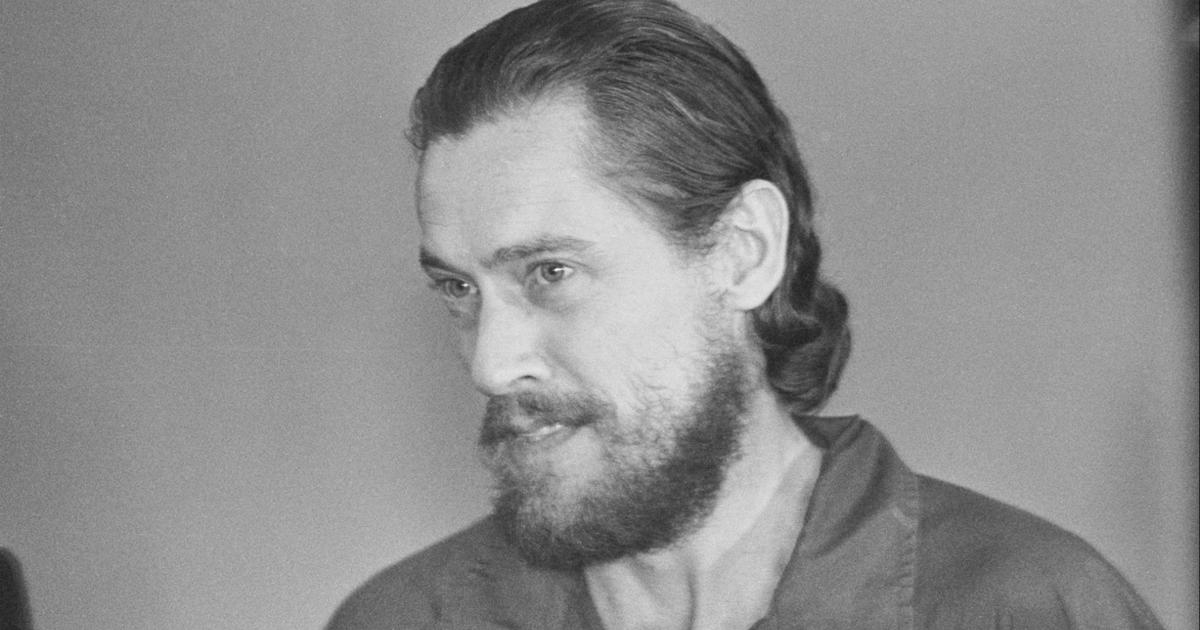NEW YORK (AP) – An inevitable fact of interviewing Ridley Scott is that, whatever movie he’s about to release, you’ll find him already knee-deep in his next project. Scott, Hollywood’s perpetual rolling stone even at age 86, may be preparing to unveil Gladiator II, one of his biggest epics yet, but at the moment he’s got the Bee Gees on the brain. Scott is developing a biopic on the Gibb brothers. On a recent Zoom call from his office in Los Angeles, he was surrounded by meticulously plotted storyboards. Scott is enthusiastic about the project. “I think the word is beyond talented. They were gifted,” he said – even if the Bee Gees brand of music seems quite distant from the no-nonsense British director. “I’m not a disco guy,” Scott said. “I dance like a plowman.” Scott is on more familiar turf in Gladiator II, which Paramount Pictures will release on November 22. He’s back in ancient Rome, among sandals, swords and glistening biceps, for a sequel to his best picture-winning Gladiator, with Russell Crowe and Joaquin Phoenix. Gladiator II is set a couple decades after that film. It focuses on the grandson of former emperor Marcus Aurelius – a minor character in Gladiator now played by Paul Mescal – who’s mentored as a gladiator by a former slave with aspirations of seizing Rome, Macrinus (Denzel Washington). Pedro Pascal co-stars as the Roman general Marcus Acacius. “Sequels are always kind of suspect,” said Scott. “But to begin with, we had a good logical stepping stone into who next, who survived and where did he go.” Aside from numerous Alien films, Scott has largely eschewed sequels throughout his career. Gladiator II had been in development, off and on, for two decades, though. And it ultimately swelled to one of Scott’s most massive projects – which is saying something for a filmmaker who just released a three-and-a-half-hour cut of his 2023 epic, Napoleon. Some reports have pegged the budget for Gladiator II at above USD300 million. But Scott believes in the movie so much that he’s called it his best. Why? “It’s to frighten the others,” he said, chuckling. “And I think I might be right. I don’t want to count my chickens. But it’s pretty good.” Part of Scott’s confidence comes from his belief in his cast, particularly Mescal, the Irish actor who broke out on the series Normal People before starring in acclaimed films like Aftersun and All of Us Strangers. “Eighteen months ago I found a show, Normal People. I think for me it looks a bit suburban, et cetera, et cetera. I watch one, then I watch another. I say, ‘Who is this guy?’ Both the guy and the girl were absolutely interesting. From that, I cast Paul Mescal,” Scott said. “You know, Paul has got that harsh profile with the nose. And then a little bit of Albert Finney. There’s a bit of Finney about him.” Scott, who paints as a hobbyist, has seemingly been drawn to bigger and bigger canvases as he’s grown older. “Napoleon,” he said, required 900 personnel; Gladiator II took 1,200. He is, himself, a commander of armies. In Malta, Scott and his regular production designer, Arthur Max, erected enormous sets. “We built Rome,” said Scott. “I discovered that you can have a lot of access, nice costumes and all blue screen. But in every shot you take – whether it’s (Scott holds his hands up for wide shots, over-shoulder shots and close-ups) you’re investing money on the blue. It’s more expensive to do that than to build it. So I built the Colosseum 40 per cent full scale. It was cheaper to do that than blue screen.” Far smaller productions have worn down other filmmakers who don’t match half the pace of Scott. But Scott, a self-described “war baby” born in 1937 whose father was a senior officer in the Royal Engineers, has showed no signs of slowing down, nor of fading ambition. Asked where he gets his drive, Scott responds, “DNA.” To Scott, his most formative training came in commercials. Particularly in television, Scott got accustomed to shooting with multiple cameras rolling simultaneously. He didn’t make his first feature, 1977’s The Duelist, until he was 40. Now, on movies like Gladiator, Scott might have eight or 10 cameras rolling for a single scene. “So I got used to scale,” said Scott. That kind of scale also comes with risk, of course. “There have been a few combustions of big box office this year that gives a certain kind of movie a promise for financial return,” Scott said. “But the financial return – au courage d’autres – encourages the others. Because greed will always be in the front, right? Maybe the investors will say, ‘Maybe it can me’. That’s what we always hope for because I just love making movies. And the bigger the better.” – Jake Coyle
Subscribe
Login
0 Comments




